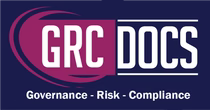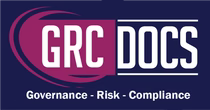SOC2 Encryption Policy Template Download
Introduction
Encryption is a critical element of modern information security, ensuring that sensitive data remains confidential, accurate, and accessible only to authorized users. This Encryption Policy provides a structured approach for managing encryption processes across an organization, including data at rest, in transit, and in process. It establishes responsibilities, key management practices, compliance requirements, and technical safeguards in line with Australian and New Zealand laws.

Step-By-Step Guide For Using the Encryption Policy
Step 1: Define Scope and Applicability
-
What to do: Apply the policy to all staff, contractors, consultants, visitors, and third parties who create, access, or use organizational information.
-
Why it matters: Encryption only works when universally applied; defining scope prevents loopholes and ensures uniform data protection.
Step 2: Assign Roles and Responsibilities
-
-
Management: Oversee encryption strategy, allocate resources, and enforce compliance.
-
IT Department: Manage encryption tools, monitor key management, and provide training.
-
Employees: Follow encryption requirements and report issues.
-
-
Why it matters: Clear accountability ensures effective execution and minimizes risks of oversight.
Step 3: Apply Encryption to Data in All States
-
-
Data at rest: Encrypt files, databases, and storage platforms.
-
Data in transit: Encrypt communication channels (emails, chats, file transfers).
-
Data in process: Protect data while being processed, especially in cloud or remote services.
-
-
Why it matters: Encryption across all states ensures end-to-end protection and prevents unauthorized access at any stage.
Step 4: Establish an Encryption Strategy
-
-
Adopt strong cryptographic algorithms based on industry standards.
-
Encrypt portable media and devices.
-
Separate decryption keys from user accounts.
-
Publish minimum standards for algorithms and key strengths.
-
-
Why it matters: A clear strategy standardizes practices, avoids weak encryption, and builds organizational resilience.
Step 5: Implement Key Management Practices
-
-
Generate strong, unique cryptographic keys.
-
Rotate keys periodically and securely back them up.
-
Store keys in secure, limited-access environments.
-
Prohibit sharing or manual handling of keys use automation where possible.
-
-
Why it matters: Poor key management undermines encryption, while strong practices ensure sustainability and security.
Step 6: Secure Protocols and Storage
-
-
Use secure protocols (HTTPS, SFTP, FTPS, TLS) for communications and file transfers.
-
Encrypt emails, chats, and web transactions.
-
Use only compliant cloud providers certified under relevant Australian and New Zealand standards.
-
Ensure redundancy with geographically distributed data storage.
-
-
Why it matters: Secure protocols and storage ensure confidentiality, integrity, and resilience of information assets.
Step 7: Conduct Risk Assessments
-
-
Perform bi-annual encryption risk assessments.
-
Identify vulnerabilities in encryption tools, algorithms, and key management.
-
Adjust strategies to mitigate emerging risks such as quantum threats or new exploits.
-
-
Why it matters: Regular assessments keep encryption practices aligned with evolving risks.

Step 8: Strengthen Security Measures
-
-
Deploy layered defenses: firewalls, intrusion detection systems, and security audits.
-
Implement physical security for servers storing sensitive keys or data.
-
Monitor encryption systems continuously for anomalies.
-
-
Why it matters: Encryption works best when supported by a strong security ecosystem.
Step 9: Apply Access Controls
-
-
Restrict encryption-related assets to the principle of least privilege.
-
Maintain audit logs for all access to keys and sensitive data.
-
Conduct periodic reviews of permissions.
-
-
Why it matters: Access controls prevent unauthorized decryption and ensure accountability.
Step 10: Ensure Regulatory Compliance
-
-
Align encryption practices with the Australian Telecommunications (Interception and Access) Act and New Zealand Telecommunications (Interception Capability and Security) Act.
-
Follow obligations under privacy laws regarding secure handling of personal and client data.
-
-
Why it matters: Compliance reduces legal risks and ensures encryption aligns with mandatory standards.
Step 11: Provide Training and Awareness
-
-
Train employees on proper encryption practices, safe data handling, and relevant laws.
-
Conduct refresher sessions to cover changes in regulations or new encryption technologies.
-
Promote awareness campaigns emphasizing data security and encryption’s role.
-
-
Why it matters: Awareness ensures employees actively participate in protecting sensitive information.
Step 12: Review, Update, and Manage Exceptions
-
-
Review the policy annually or after significant legal or business changes.
-
Incorporate feedback from audits and risk assessments.
-
Document and approve exceptions only at senior management level.
-
-
Why it matters: Regular updates ensure the policy stays relevant, and strict approval for exceptions maintains integrity.
Conclusion
The Encryption Policy serves as a foundational safeguard for organizational data, ensuring confidentiality, integrity, and availability across all environments. By following these twelve steps covering encryption strategy, key management, secure protocols, risk assessments, security measures, access controls, compliance, and training organizations create a comprehensive and resilient encryption framework. Regular reviews and strict oversight guarantee ongoing effectiveness while building trust with stakeholders.





